Pretzels

Pretzels have a healthy image, but they’re bad for you. A quick look at the ingredients reveals white flour, fats, and salt. Some pretzels that you can buy at the store are fat free, but others have been cooked in unhealthy oils. The white flour found in pretzels is also dangerous for diabetics since it is a simple carbohydrate that can increase the amount of glucose in your blood.
Pretzels really don't have much nutritional value, if any. The giant soft pretzels that you can buy at sport events or the mall are even worse for you. They contain even more sugar, fat, and salt than the small crunchy ones do, especially if you get them coated in butter, cinnamon and sugar, or other fun toppings or dips.
Processed Lunch Meat

Processed lunch meat may not seem that bad, but it’s loaded with sodium. Some lunch meats have as much as 650 milligrams of sodium in one serving. They are also full of nitrates and nitrites that are also not good for you, even if you don't have diabetes.
Sure, it’s fat-free, but it can easily exacerbate blood pressure issues and harm your body. Plus, fat-free foods usually make up for the lack of flavor by adding in a ton of unnecessary sugars, making it overall even worse for you than simply cooking your own chicken breast and slicing it for sandwiches.
Microwave Popcorn
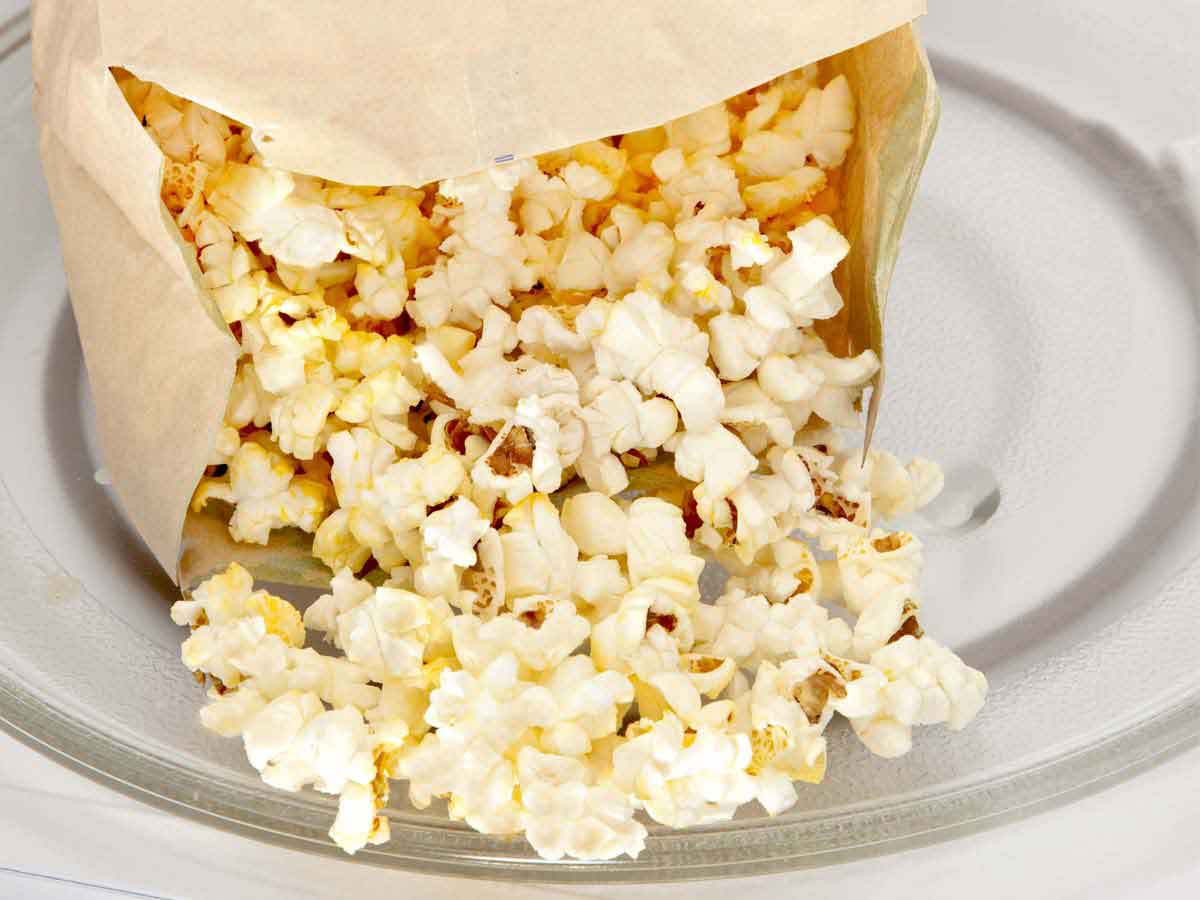
We specifically want to talk about avoiding microwave popcorn, and even movie popcorn, compared to homemade popcorn or pre-popped and bagged popcorn from the store because of the trans fats found already packaged inside with the kernels. There aren’t just kernels in those packages you put in the microwave, there are also vegetable oils that are not good for you or your diabetes. Movie popcorns contain a lot of these types of fats in them as well.
There are several brands of pre-popped and bagged popcorn that you can buy at the store that were prepared in better ingredients like avocado oil, coconut oil, or olive oil that don't contain trans fats. However, if you really like the warm, fresh popcorn, investing in an air-fryer at home could be a real game changer because you don’t need any oil! Cooking popcorn this way is also a great way to get plenty of healthy fiber, and you can mix fun seasonings of your own creation at home! Just go easy on the salt, fat, and sugar that you add to it.
Pie
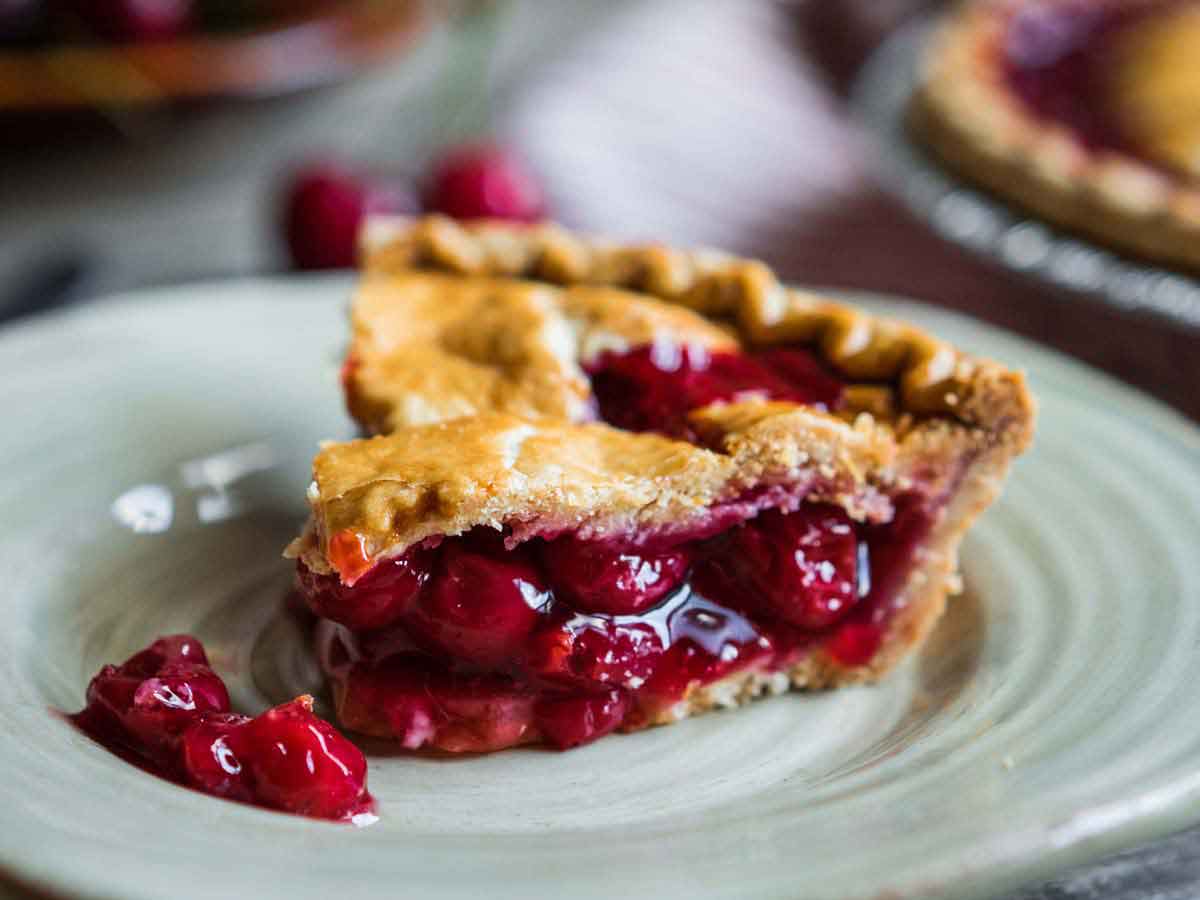
While pie is usually filled with some type of fruit or vegetable like apples, cherries, pumpkins, or strawberries, they are also filled with tons of added sugar as well as tons of vegetable shortening, which we have already mentioned are horrible to eat especially when you have diabetes. The crust is usually white flour with butter and/or shortening to give it the right texture to form into a pie and become nice and flakey after being cooked.
The fillings of pies are usually loaded with sugar, not only from the natural sugars that are cooked down and released when baking the fruit, but also all of the sugar you add to the filling to make it that much more tasty. And again, like with most other foods, the kind you buy pre-made at the store is even worse for you because you can’t control the amount of bad things in them! And remember, these types of sweets should be avoided, even if you make the “better” substitutions such as using honey or maple syrup instead of white sugar, whole wheat flour instead of white flour, or coconut oil instead of shortening.
Fried Chicken

After the devastating blow of not being able to eat doughnuts, you can rest assured that there are better alternatives to the classic fried chicken. Baked and breaded chicken can still have that same satisfying texture and taste as fried chicken, with way less fat and other bad stuff. If you use healthier batter mixes like with whole wheat flour or almond flour, or even corn flakes or oats, that can tackle the problem of white flour in the breading as well.
Baking chicken on a tray in the oven uses only a fraction of the oil needed to fry chicken, which saves you calories and unwanted trans fats. So, like with the french fries, you can’t order fried chicken out anymore because most are cooked in the traditional unhealthy ways, but that doesn’t mean you have to miss out forever because you can still make your own healthier version at home!
Frozen Meals

Frozen meals are the epitome of convenience, but they’re high in sodium and fat. This can make them an unhealthy choice for anyone, but especially for people with diabetes. They pack these meals full of salt and fat, and even sugar, to make them taste good, but at a very high cost to your health.
If you have no choice but to purchase a few on-the-go meals, try to keep the content of carbohydrates, sodium, calories, fiber, and fat in mind while choosing your frozen entrée. There are better, healthier options you can get, and no, we don't mean Lean Cuisine. Look for frozen meals made with more whole food ingredients, read the ingredients list, and look at the nutrition labels. These steps could just save your life.
Margarine

Decades ago when everyone was told that butter was bad for you, margarine started gaining in popularity. It was deemed as the healthier alternative because of its low fat consistency, but the problem is that the types of fats in margarine, even though there might be less than in whole fat butter, are way worse for you. They are the gross hydrogenated oils and sometimes even trans fats which are so bad for you, especially when you have diabetes.
Margarine can also have a lot of hidden sugars and salt that you didn’t know you were consuming either. In this case, it is healthier to eat the real thing: butter. However, it is also known that butter is not good to eat if you have diabetes either. Instead of using margarine or butter to cook, it is better to cook in coconut, avocado, or olive oil. As for your bread, you can’t use these classic spreads, but try to mix up your morning toast a bit by adding peanut butter or avocado instead of butter.
Chocolate Covered Peanuts
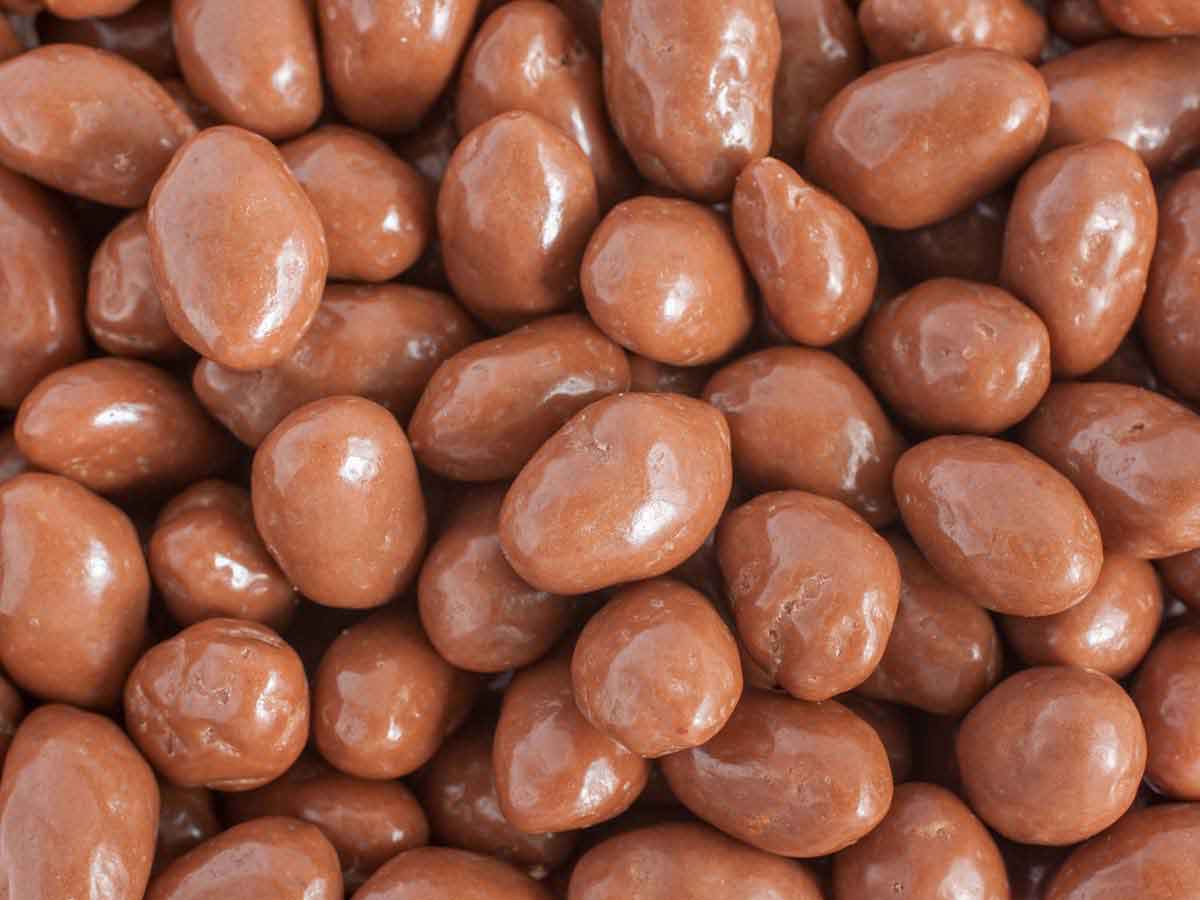
You need to watch your intake of peanuts and other nuts in general when you have diabetes because of all of the fats in them. Yes, they are usually the “good” fats, but they are still fats and should only be eaten in a very conservative moderation in any healthy diet, especially if you have diabetes. It’s too easy to just sit there and eat way too many while watching television.
If this is the case with normal nuts, chocolate covered peanuts are even worse for you because of all of the added sugars and fats that are needed to make them taste good. Any good chocolate has fat in it to give the creamy texture, and even more fat is needed to help it have that smooth coating over raisins and peanuts, adding to the overall fat of this snack. So make sure that you haven’t labeled this snack as “healthy” just because it isn’t a candy bar.
Chips
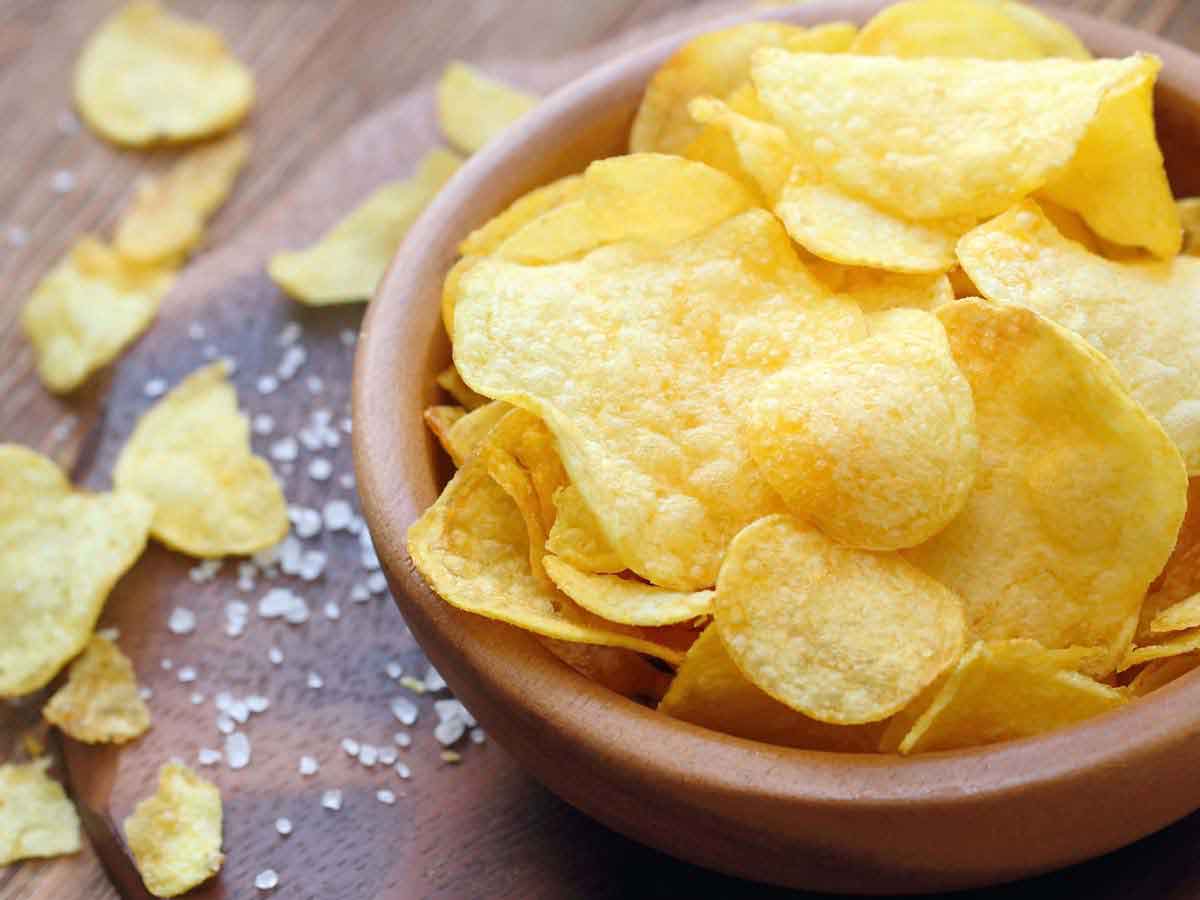
Just like fries, chips are something that you should definitely avoid while eating out because of their high fat content. With its high fat content, it includes a ton of the unhealthy fats due to the type of oil that they are cooked in. This goes for bagged chips and even the restaurant’s own homemade recipe. Just because they are made in-shop doesn’t necessarily mean that they used healthier ingredients to make them.
The healthier option for chips is to get the baked kind, and the healthiest option for chips is to make them yourself at home in the oven or the airfryer. Baking or airfrying them yourself is healthier because you then can also control the amount of oil, salt, and sugar that goes into the seasoning. You’re probably thinking “sugar on chips?!” and yes, flavors like barbeque have a ton of sugar as well as salt due to the flavor. Watch out!
Jams and Jellies

Jams, preserves, and jelly are fruits that have been packed with sugar. Every now and then, it’s alright to eat a tiny portion of regular jelly. When fruits are heated, they naturally caramelize and create more sugar, but in addition to that, jams and jellies very oven have added sugars that make it way too sweet for your blood.
However, many brands make sugar-free jams that people with diabetes can eat relatively safely. If you really want to go the extra mile, you could even just add a couple berries to your bread and mash them into the bread to make your own fiber-rich and low-sugar jam!
Cookies
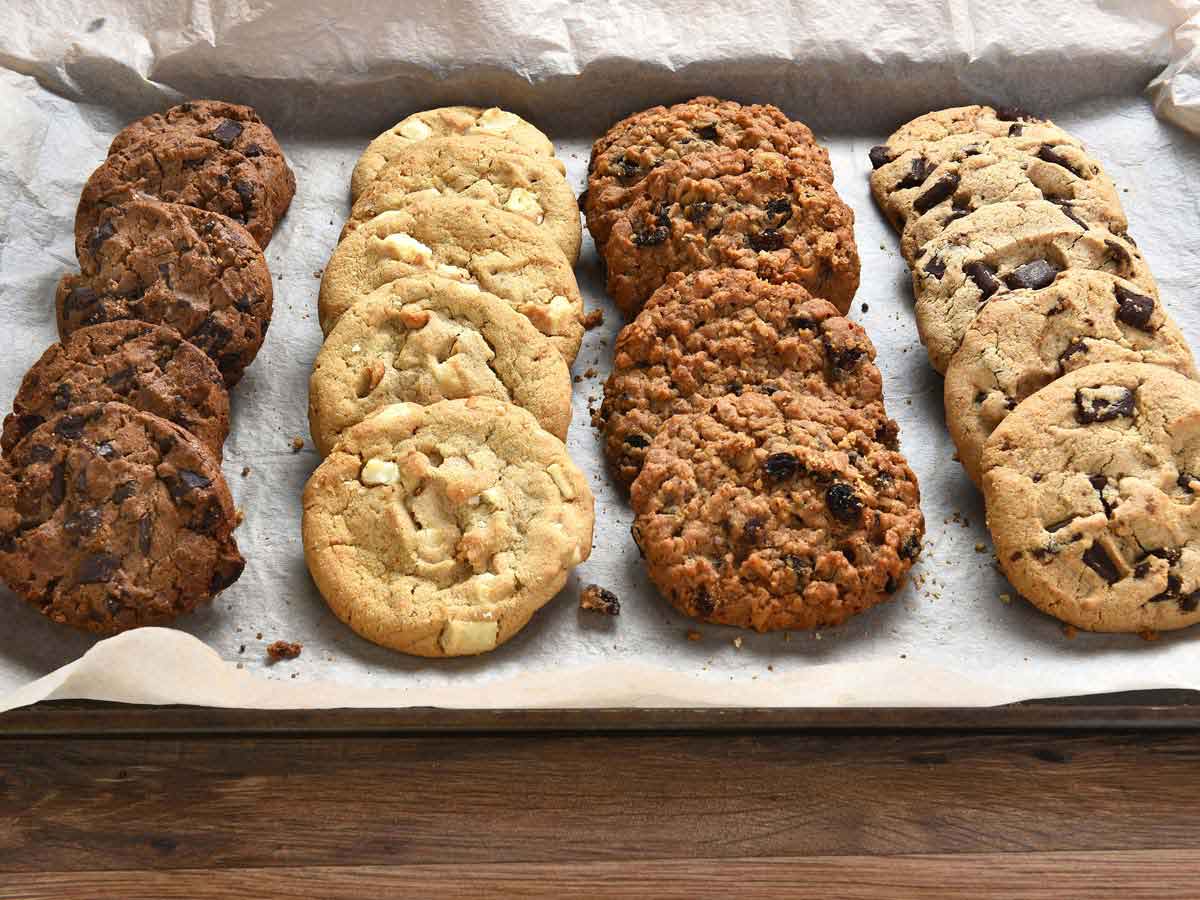
You definitely want to avoid cookies if you are living with diabetes. Cookies are high in simple sugar and bleached flour. For example, a simple sugar cookie will have the main ingredients of white flour and white sugar, and a large amount of each. Many cookies also have shortening like Crisco in the ingredients list, which is made up of the worst fats that you could eat, especially if you have diabetes. However, there are some tweaks you could make.
To avoid the high amounts of trans fats and other bad fats found in shortening for cookies, you can substitute coconut oil instead since it is full of the good kinds of fat. Be sure to get the coconut oil that is a solid at room temperature, not the liquid kind, to best mimic the texture of shortening. Pre-packaged cookies from the store are the biggest culprits you want to avoid since you cannot modify the ingredients, and they often are made up of the worst of the worst ingredients for diabetics.
White Sugar
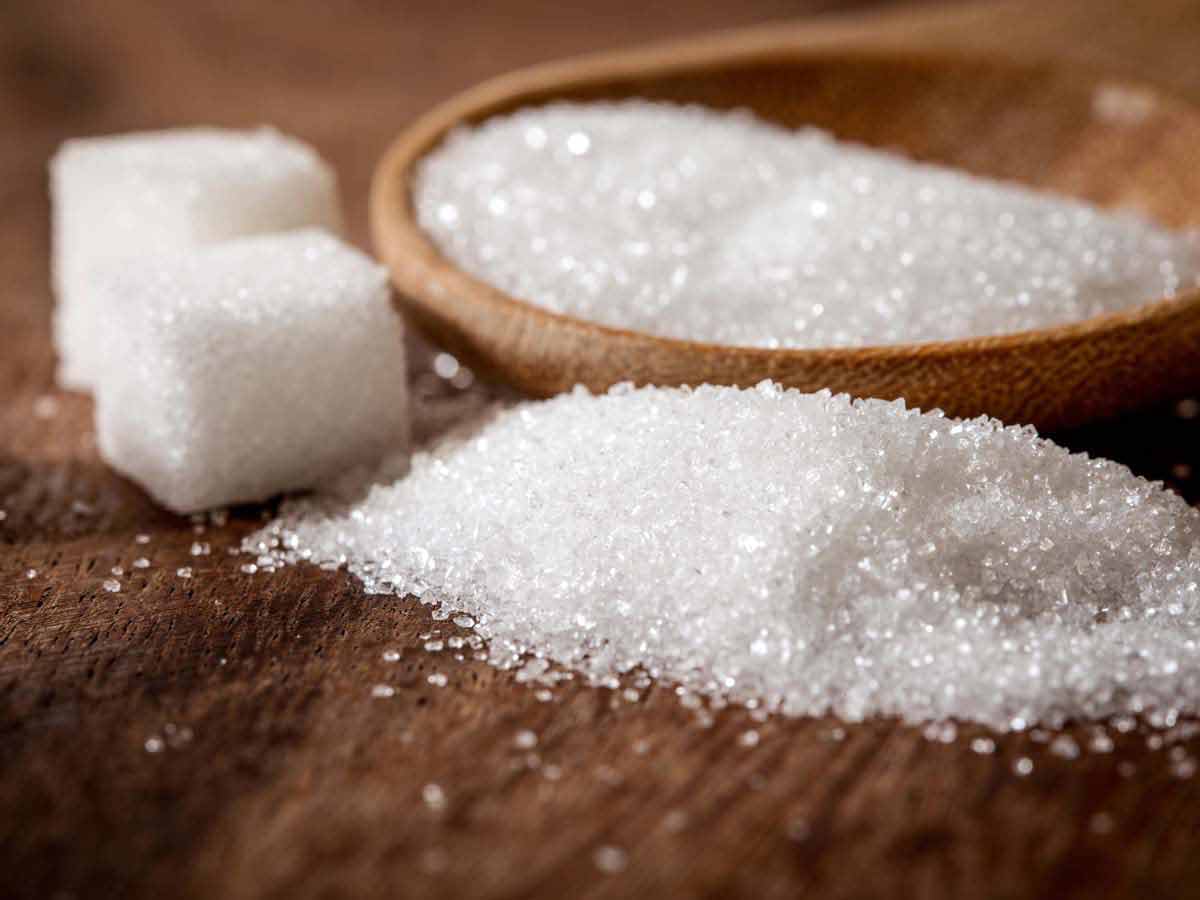
Like we have been alluding to this whole time, you want to definitely avoid white sugar at all costs when you have diabetes. If you don’t know what white sugar is, you actually do. It’s the exact same sugar you think of when you think of sugar. Along with white sugar, you will also want to definitely avoid high fructose corn syrup, which is way worse for everyone’s health, not only those with diabetes.
White sugar spikes your insulin levels, so you want to instead reach moderately for sweeteners that won’t weigh heavy on your glycemic load like honey, maple syrup, or coconut sugar. White sugar, or cane sugar, are processed too quickly by the body and will cause insulin levels to rise too quickly. This and high fructose corn syrup are the main bad guys in all foods that diabetics should look out for.
Red Meat
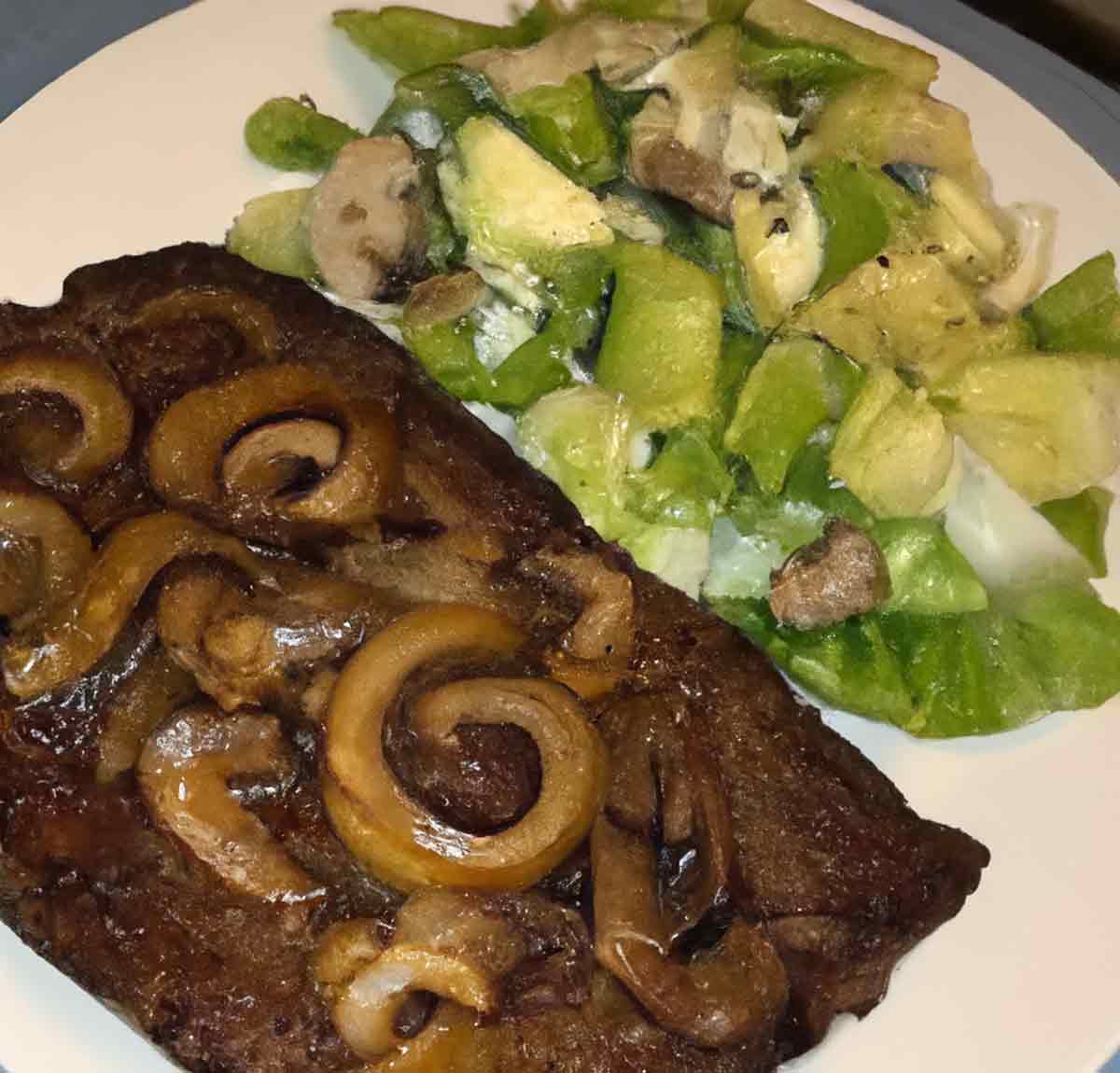
Red meat is high in saturated fats, which can lead to cardiovascular disease and diabetes. For someone who already has diabetes, it can be especially bad for you. The American College of Cardiology recommends a very low amount, if any, red meat in your diet because of these fats. In addition, the farming and processing of these meats can make them even worse for your health.
Also, the nitrites in the meat that impair the function of the pancreas. Processed red meats, especially the cured ones, have the most nitrites since they are added to aid in the curing process. In addition, the iron in red meat may increase insulin resistance. Instead of red meat, choose lean meats like turkey and chicken or any type of fish.
Coffee with Cream and Sugar

Coffee shops are notorious for adding tons of sugar to their drinks. People with diabetes should opt to make their own coffee instead. Not only is it easy, but it’s also less expensive than a $5 latte. Brewing black coffee then adding only milk or a milk alternative, or even just drinking it black, is definitely better for your insulin levels.
Coffee drinks that are high in fat and sugar can also develop insulin resistance if consumed regularly. This includes the vast majority of flavored and specialty drinks because the high fat creams and high sugar flavored syrups that they add in coffee shops, bottled coffee drinks, and store-bought creamers alike are astounding. Keep it simple!
Cake

Cake is high in sugar, white flour, and oftentimes trans fats, just like cookies. These are all very bad to consume if you have diabetes. The sugar and white flour will spike your insulin and then send it falling down. They are not good for your glycemic load at all. White sugar and white flour raise insulin high because of the amount of glucose they have and the very low amount of fiber too.
Foods that have sugar but that also have fiber, like fruit, are easier on the overall glycemic load of your body because the fiber causes your body to break down the food slower, causing a gentler release of the glucose inside. Also, fruit usually is way lower in sugar than cake and the fiber will fill you up better, causing you to feel like you don’t need to eat more in order to feel satisfied.
Mashed Potatoes

Potatoes are actually a good source of vitamins, minerals, and fiber, so they’re not off the table for diabetics. Mashed potatoes, on the other hand, usually have things like butter, salt, sour cream, and cheese added to them. All these additives spell out danger for those with diabetes.
However, diabetics can still have controlled portions of mashed potatoes. In addition, when preparing them, try adding heart-healthy ingredients to substitute for things like whole milk, cheese, and butter. Making your food at home versus buying them at a restaurant or the store is always a healthier option when you choose the ingredients wisely.
Iceberg Lettuce
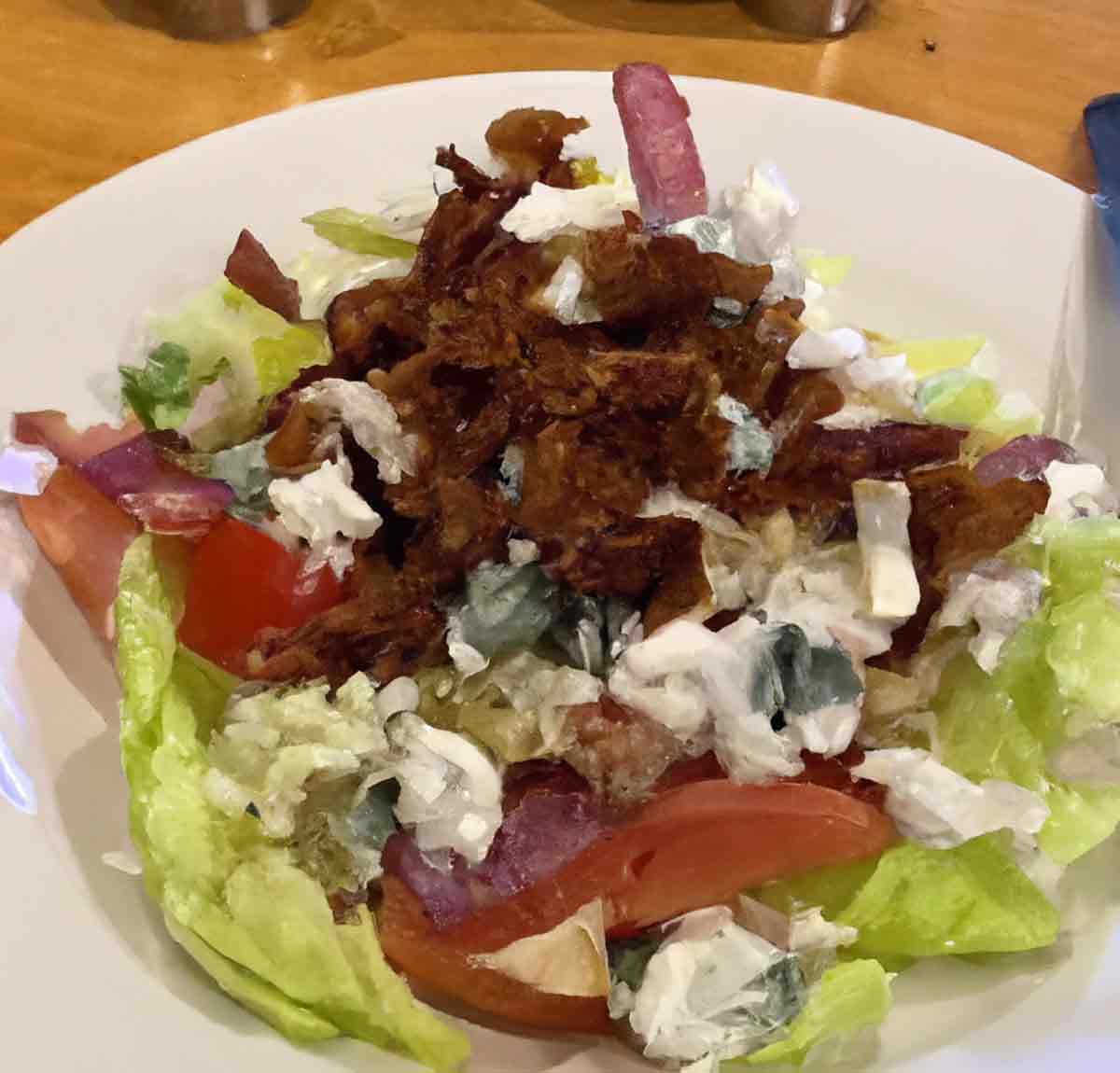
Iceberg lettuce isn’t bad for you; it just doesn't offer much nutritional value. There are much better things you could be eating in your salad instead instead. Since it is a vegetable, it does have a good amount of fiber, and it also doesn't have very much sugar.
However, kale, cabbage, and spinach are all healthier—and tastier—options. They go great in salads, mixed in with other dishes, or on for wraps, and provide much more nutritional value. Since these leafy greens are darker in color and have way less water, they have more nutrients packed inside than iceberg.
Smoothies

Fruit can’t be bad for you, right? It can be if they’re made into a smoothie. They sound nutritious but can be filled with sugar. You have to be very careful when you make smoothies, and especially if you buy them from the store. In homemade smoothies, you can make sure you are only using fruit and water or nut milk in the smoothie to make sure it is healthy, but you can't when you buy them from the store or a restaurant.
This is especially true if they’re oversized and sweetened with sugary syrups and yogurt. Many smoothie places may make you think you are ordering real blueberries in your smoothie when it is actually just blueberry syrup, packed with sugar and very minimal nutrients. Even though you can make healthier smoothies at home, eating the fruit whole gets beneficial fiber and helps your body process the sugar more slowly.
Honey Roasted Cashews
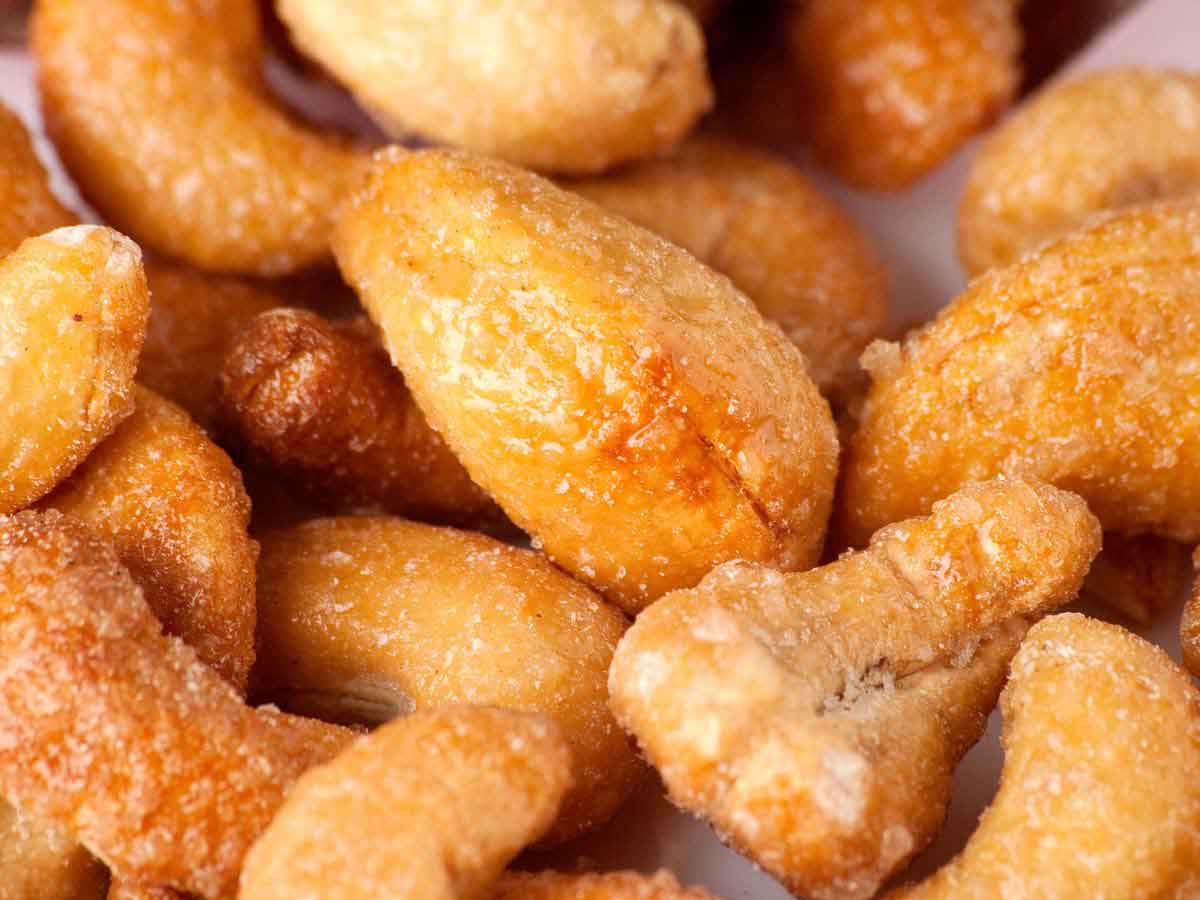
Honey roasted cashews have the same type of problem as chocolate-covered peanuts do. Since they are nuts, they naturally have a lot of fat, which is why they taste good. They also are prepared in an oil that isn’t good for you, such as vegetable, canola, or seed oil. In addition, honey roasted cashews, despite having “honey” in the title, are covered in sugar and salt.
Honey is not actually used in the typical store-bought honey roasted cashews. Honey is actually gentler on your glycemic load than sugar is and is a better alternative in baking and in smoothies than using white sugar. However, these store-bought packaged foods like honey-roasted cashews only have honey in the name and in the taste, not in the ingredients list. Be careful of these sneaky extra fats and sugars in your diet.
Flavored Water

Flavored water used to be disguised as a healthy option until companies were told to do otherwise. For example, VitaminWater sounds like an excellent choice. It has vitamins! Wrong... These drinks can have 32 grams sugar in the whole bottle. Definitely check the nutrition label before you buy.
Opt for flavored waters without added sugar, instead. There are several great options popping up in stores. You will also want to avoid added sweeteners that aren't sugar but could raise your glycemic load. It is best to get a completely sweetener free flavored water or one flavored with only real fruit purees, not fruit juices since juices contain a lot more sugar and purees contain more fiber.
Pickles

Pickles are packed with salt and can take a significant portion of your sodium for the day. Eating too much sodium can lead to high blood pressure. Did you know that pickles are also often artificially colored? They have food dyes in them to make sure they are the most appetizing color, when in reality, the ingredients are not appetizing at all.
According to the U.S. nutritional guidelines, those with diabetes should have less than 1,500 mg of sodium per day. If you love pickles, choose ones with the lowest amount of sodium that you can find. Some pickles even have hidden sugars, so watch out for those too. To make sure you are getting the healthiest pickles, you could even make your own!
Mayonnaise

Mayo is usually made with bad fats instead of better alternatives, like olive oil. They also contain a lot of carbs and sodium, which can be bad for those with diabetes. Mayo is full of oils like canola oil as well as eggs, which are notoriously high in saturated fats, so you will need to be very careful when eating mayo. It will probably be best to avoid it altogether while eating out.
Stick to mayo made with olive oil or avocado oil, just make sure to follow the portion sizes on the label. Even though mayo made with olive or avocado oil are healthier, make sure that they are the only oils present because sometimes the package makes you think it is only made of one of these healthy oils and eggs, but it is actually make up of one of those healthy oils plus unhealthy oils. Reading labels and ingredients lists are your new best friends!
Whole Milk
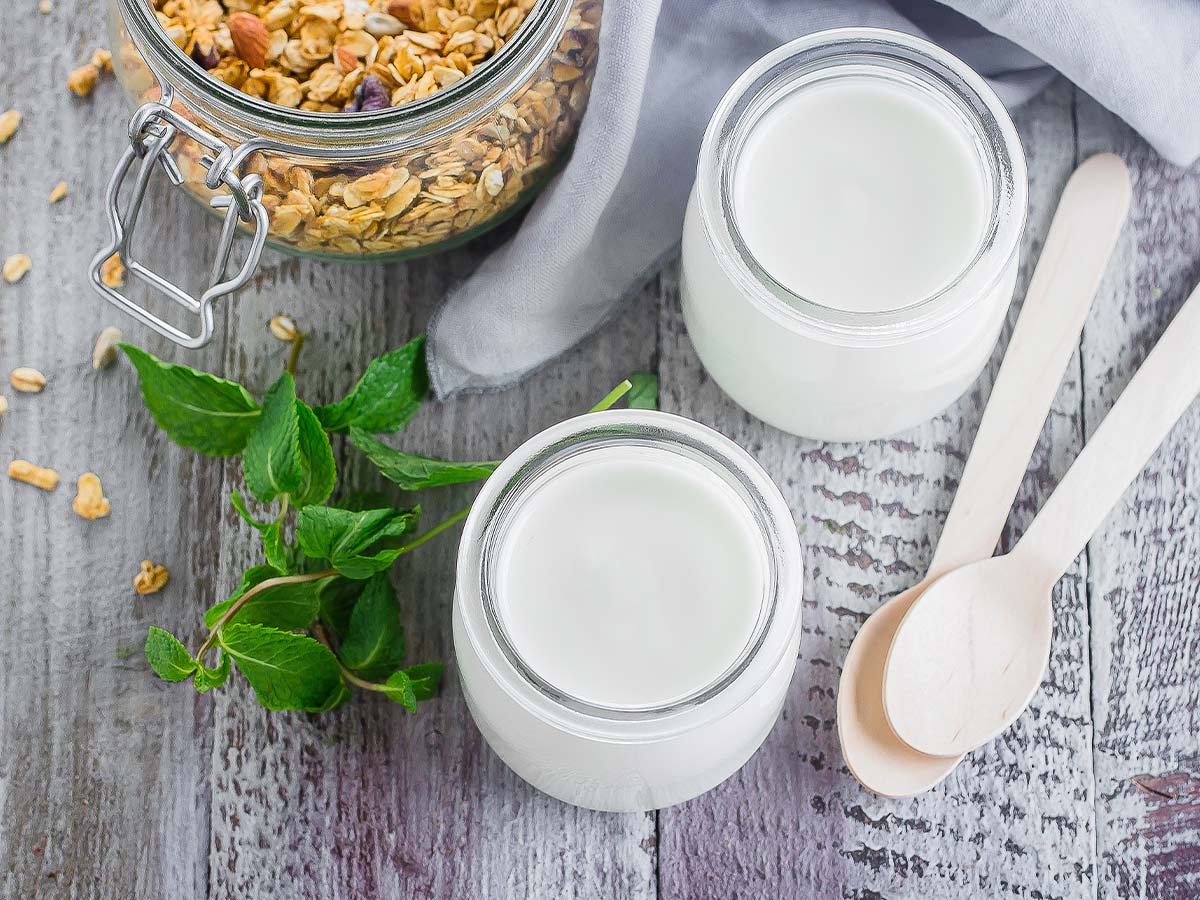
For someone with diabetes, a diet that’s high in saturated fat can make insulin resistance worse. Whole milk has a lot of saturated fat. All animal fats are saturated fats, so keep that in mind when you are choosing animal products that contain fat, which most do.
Thankfully, 1% and skim milk are still on the table due to their low-fat content. Be careful of low fat dairy products, however, because since fats are part of what makes them taste so good, the company could be adding a ton of extra sugar to make sure that it still tastes good, but it is actually worse for your health.
Energy Drinks
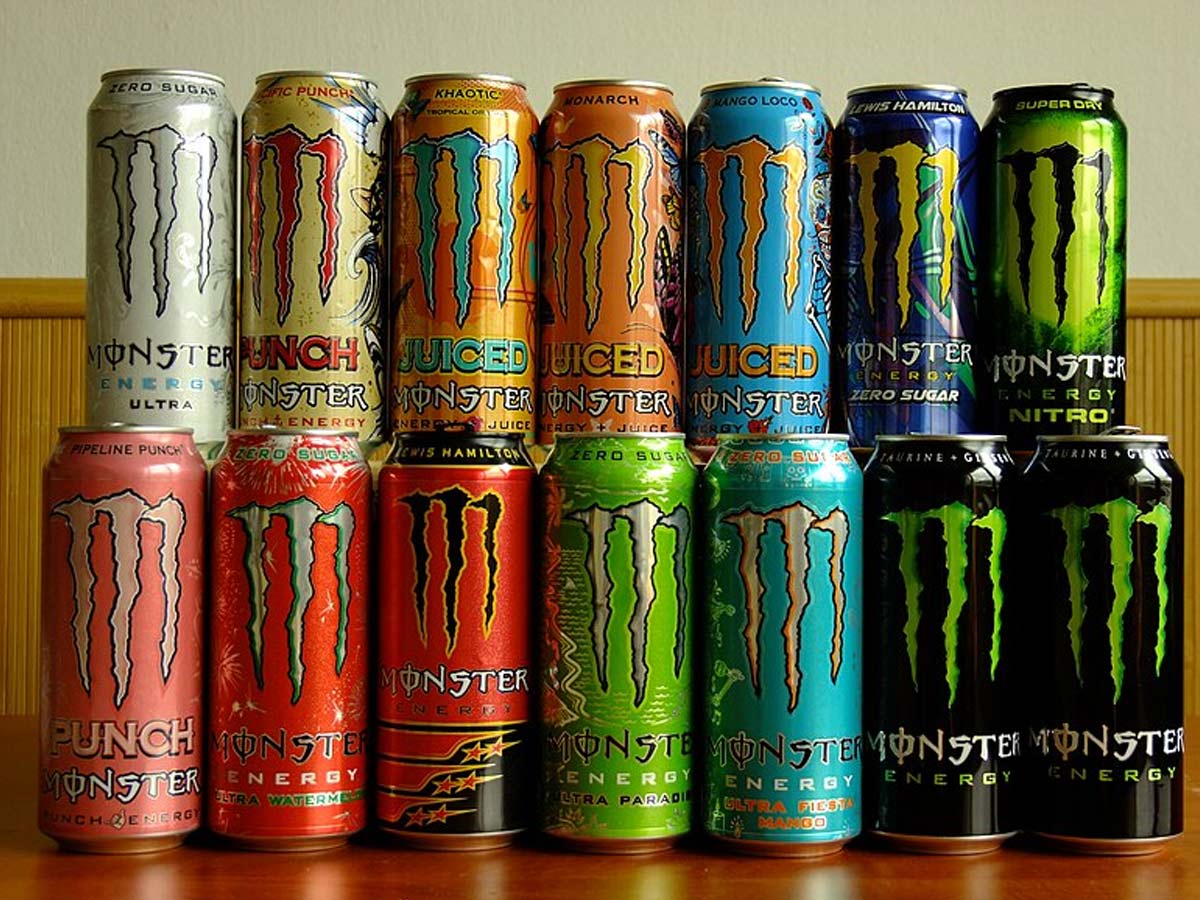
Energy drinks may not taste sweet, but they have a ton of sugar. Your average energy drink can have 27g to 40g of sugar per serving. They are also full of ingredients that are just not good for your body in general. You are much better off getting your energy from the natural caffeine of coffee or caffeinated teas without a ton of sugar.
Considering most energy drinks have more than one serving, you’re consuming a lot of sugar for a drink if you drink the whole thing. However, there are some brands that make sugar-free varieties for those following a stricter diet and feel like you can't get rid of your energy drinks. But you should really consider lightly sweetened coffee or teas instead.
Canned Fruit
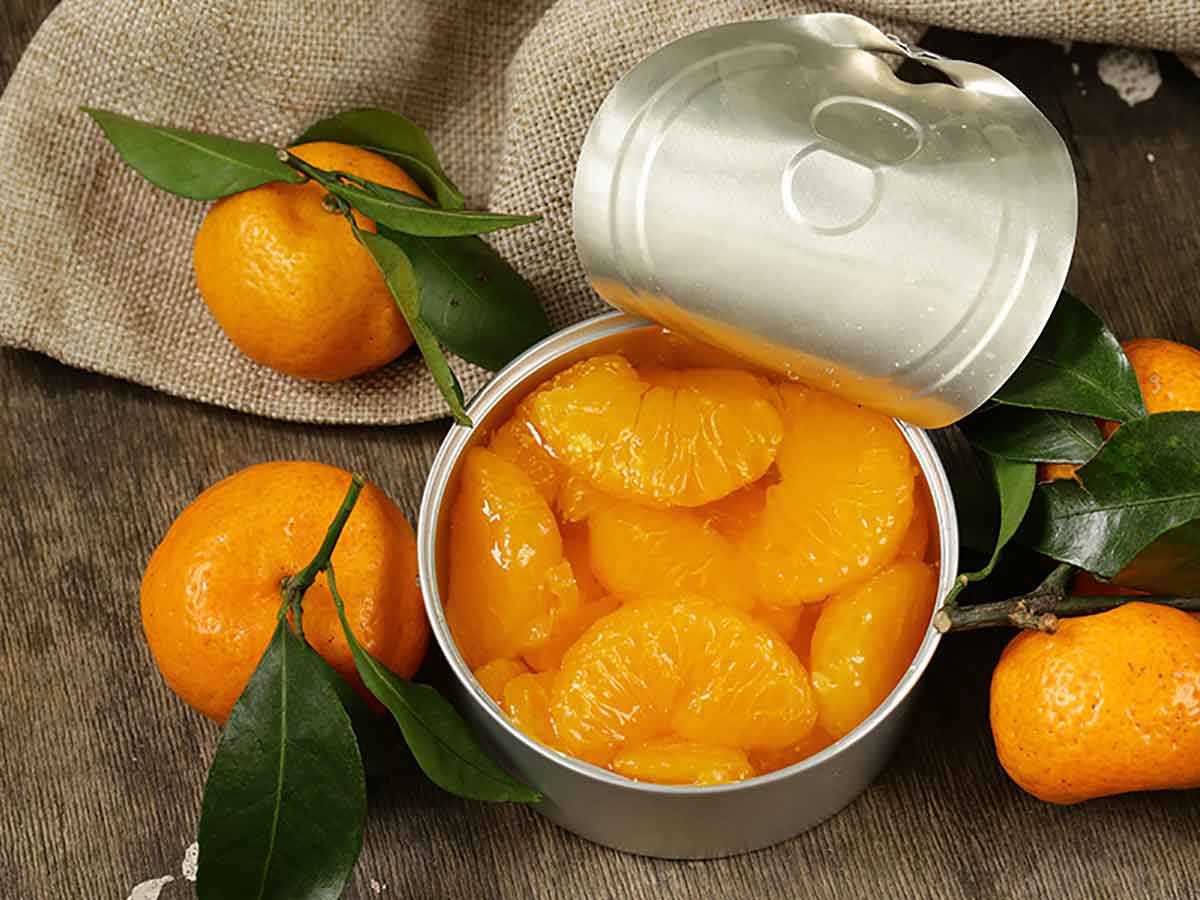
Canned fruit or fruit packed in syrup can be high in sugar. For example, fruit cups have 15 grams sugar per cup. The recommended amount of sugar we should eat in a day is about 25 grams. That's a large amount of your daily allowance of sugar! And that is only for someone who doesn't have diabetes. Diabetics should consume way less sugar in the day.
Some fruit cups even have a “No Sugar Added” label because they’re sweetened with Stevia. However, these products can still contain up to 5g sugar. Canned fruits also have a lower fiber content than the fresh or frozen fruits, so it is best to just get the real thing from the produce or frozen aisle than from the packaged foods section.
Fruit Juice
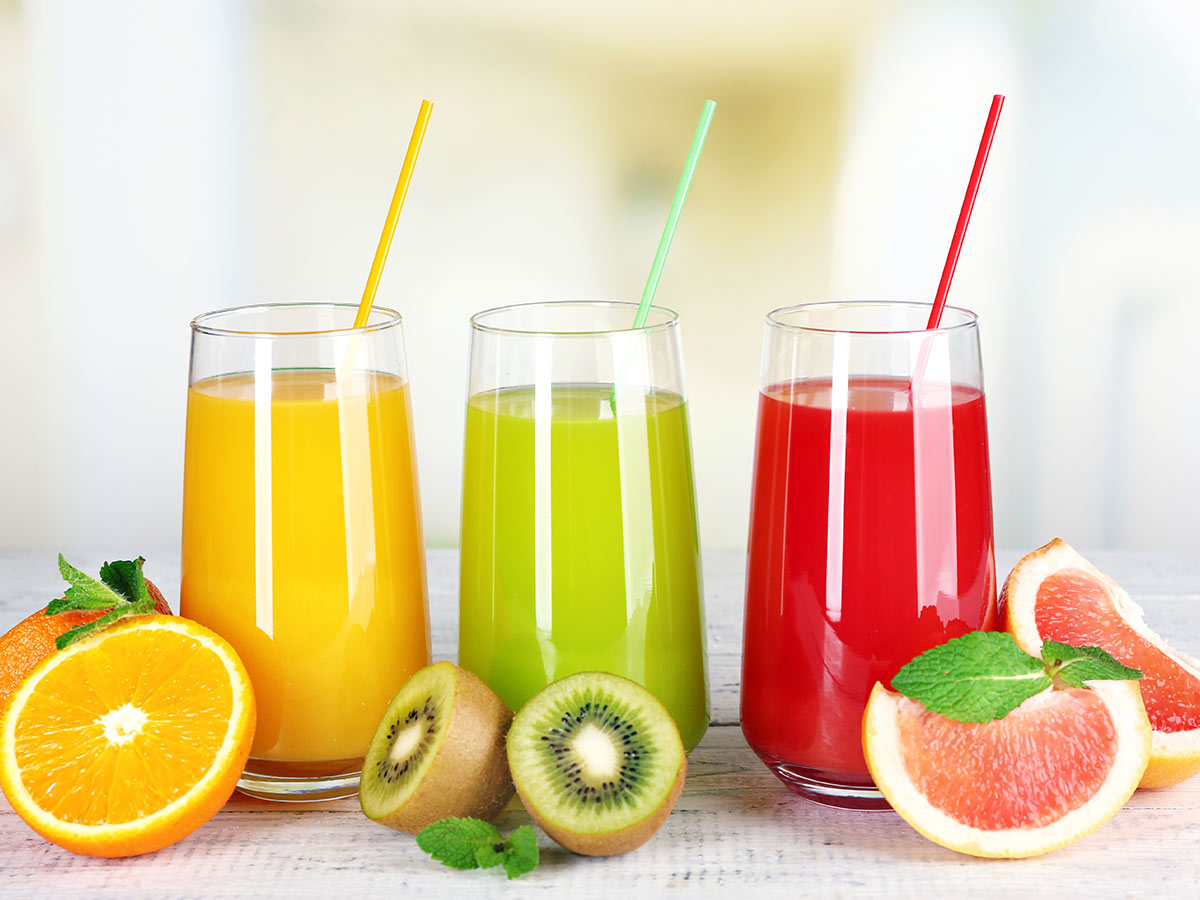
Fruit juice may seem healthy, but it’s actually loaded with sugar just like soft drinks. If you drink a 15.2-ounce bottle of Minute Maid Apple Juice, you’re also consuming 49 grams of sugar. That's a ton of sugar for a person without diabetes, so it is even worse for someone who has diabetes.
Orange juice has around 33g for a 12-ounce cup,—which, as we discussed earlier—is almost as much as a can of Coca-Cola. Fruit juice also has way less fiber than smoothies which have less fiber than eating the real thing. So if you are craving something fruity, just eat an orange!
Brown Rice

Brown rice is tasty, but it doesn’t contain much fiber. Fiber helps you feel fuller longer while making it easier to maintain blood sugar and cholesterol. Try higher-fiber options like quinoa or cauliflower rice. These options also contain way more protein, which helps keep your blood sugar more stable as well as keeping you fuller longer.
However, if you just have to have that brown rice in your diet, eating it in moderation should be perfectly safe and may even help to manage blood sugar levels. It does contain fiber, it just isn't the best form of fiber you could be getting in your anti-diabetes diet.
Canned Vegetables
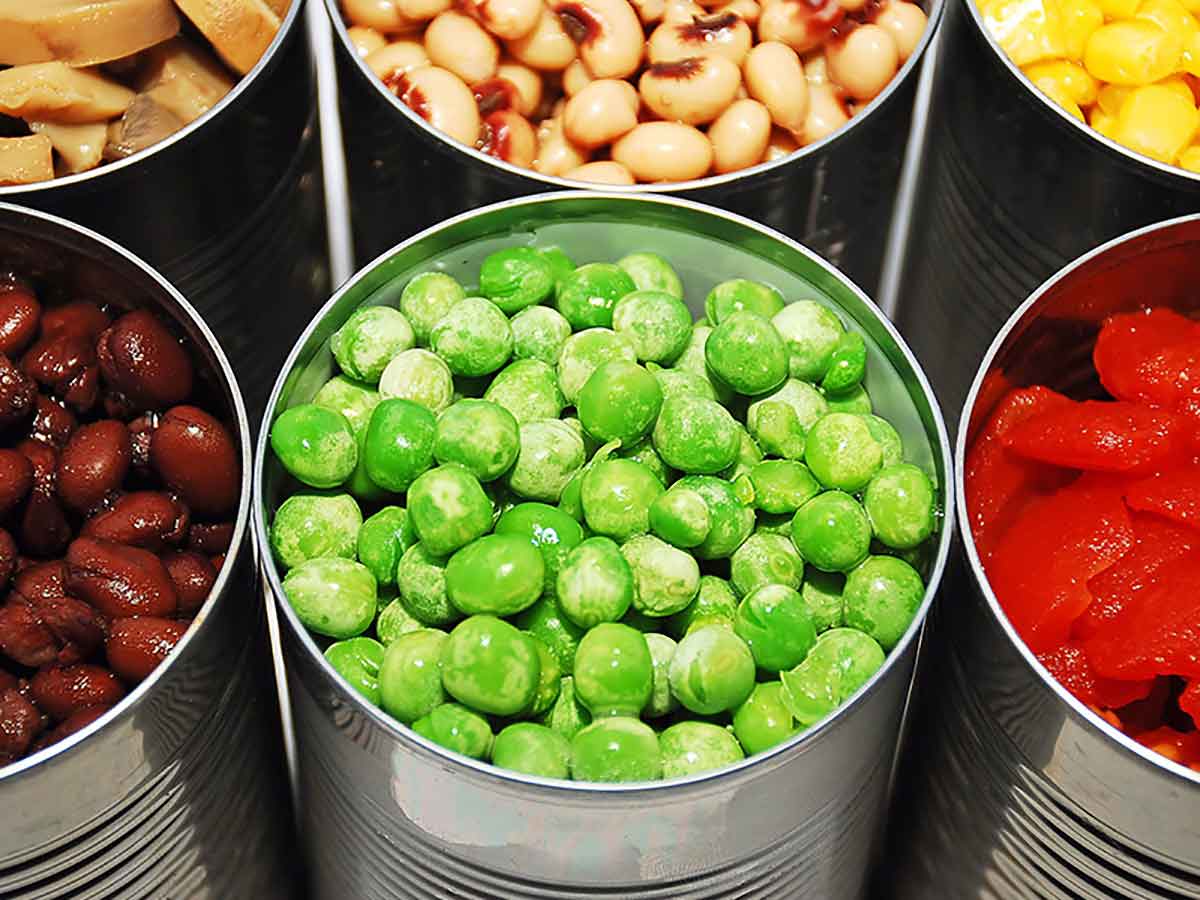
Those with diabetes should avoid sodium as much as they can, which is why canned vegetables can be a bad option. Some canned veggies have a ton of sodium, although many brands make canned vegetables that don’t have added salt.
If you want more convenient vegetables than the whole veggies you can find in the produce section, go for the frozen ones! Choose the ones that don't have anything added to them, just the plain vegetables, and just steam them or cook them any way you like. They are sometimes even cheaper than buying them fresh, but just as nutritious.
French Fries

When speaking of trans fats, you can’t avoid talking about french fries. Fries are soaked in some of the worst oils as they are cooked, and getting too much fat in your diet, especially the bad kinds of fat, is really bad for diabetes. However, while you shouldn’t order your fries out at restaurants anymore, you don’t have to say good-bye to your beloved fries forever because there are healthier alternatives to your favorite treat that you can make at home.
The popular airfryer could be your new best friend since you can cook fresh sliced potatoes in only a little healthy oil, or no extra oil at all, to achieve your favorite snack. If you don’t want to invest in an airfryer, no problem! You can also bake fresh sliced potatoes in the same way. Just like with homemade popcorn, you can control how much oil and what kind of oil is on your snack as well as what kinds of seasonings you add with it.
White Bread

White bread is high in starches and refined grains. Refined grains are digested by the body quickly and are processed like sugar. Despite having no sugar in the food, white bread can cause blood glucose spikes that can be dangerous for people with diabetes. However, some brands do add sugar to the bread, so be careful.
White bread is also low in some nutrients, particularly fiber. And fiber impacts blood glucose in more measured amounts, more consistently, over a longer period of time. Choose whole-wheat bread if you can't take bread out of your diet. Don't even bother with gluten-free bread, because they are still full of sugars and other bad ingredients.
Regular Soft Drinks
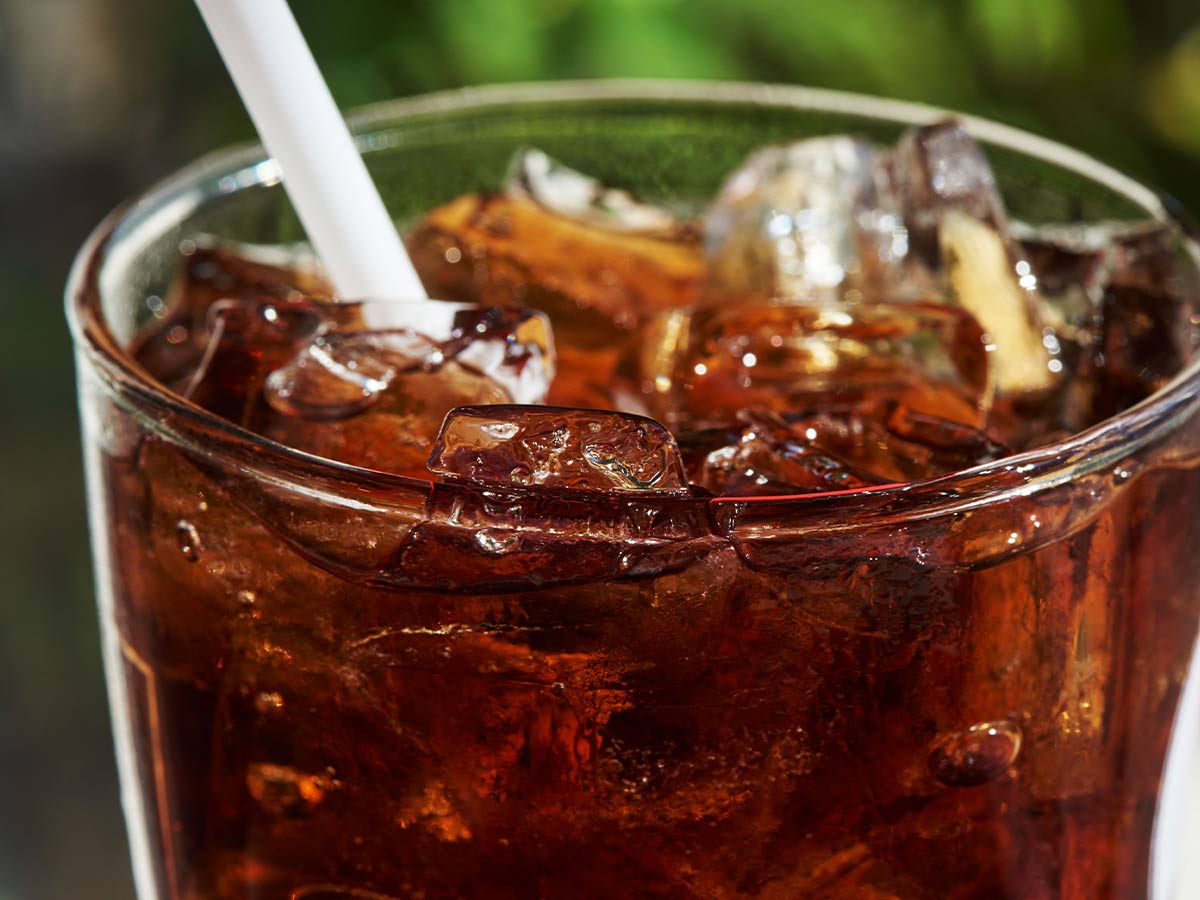
Regular soft drinks are horrible for those with diabetes. One 12-ounce can of soda has as much as 39 grams of sugar. Mountain Dew has 46 grams of sugar for a 12-ounce can, alone! This comes from the high fructose corn syrup found in all traditional sodas in the United States. Even if they were make with cane sugar, like the sodas found outside of the U.S., it is still too much sugar for our bodies to handle properly.
Thankfully, diet sodas are still alright to drink. They are made with artificial sweeteners that are easier on the body. However, these artificial sweeteners could be bad for other aspects of your health such as brain function. As a general rule, you should cut back on all sodas as much as possible and substitute healthier, low-sugar or sweetener free drinks instead, like some flavored waters or kombucha.
Alcohol

Everyone loves a glass of wine now and then, but alcohol is known for significantly altering the body’s response to insulin. It has exaggerated effects if you are drinking while having an empty stomach or taking medication for your diabetes.
On top of this, many drinks can be extremely sugary. Cocktails are often made with sugared syrups like grenadine. If you do enjoy drinking alcohol every once in a while at special events, be sure to do your research and talk to your doctor before you start on your drink as to which drinks are the best for you to have with diabetes.
Nachos
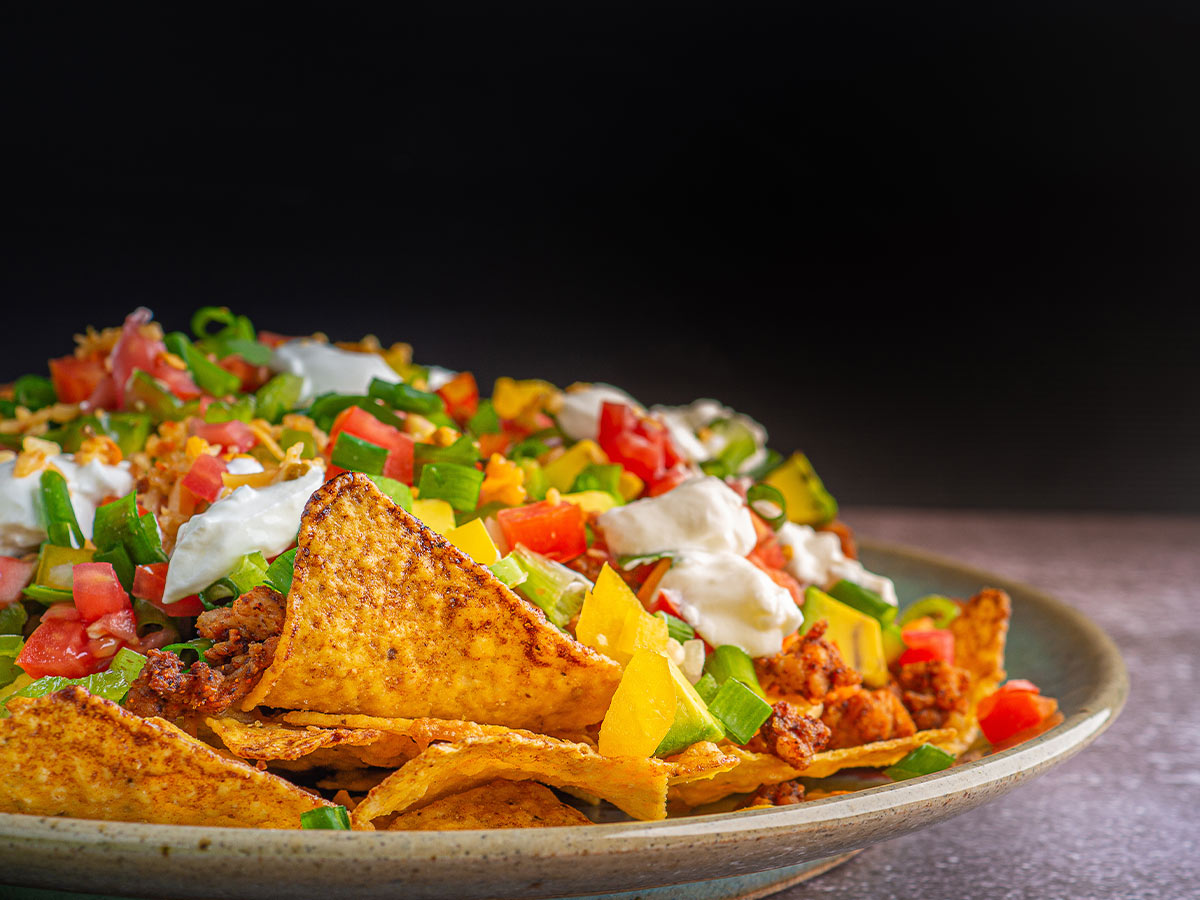
Everyone loves a good plate of nachos, but it can be bad for someone with diabetes. Nachos are usually made with red meat, refried beans, cheese, and tons of other things that can be dangerous to eat. They are also loaded with tons of salt. From the chips to the meat to the cheese, everything has way more salt than is necessary or healthy for a personal with diabetes, or even people without diabetes.
Not to mention, any kind of chip is an unhealthy chip for diabetics unless it's baked and has a low carb count. Together, these ingredients create a plate full of fat and calories, and tons and tons of salt.
Dried Fruit
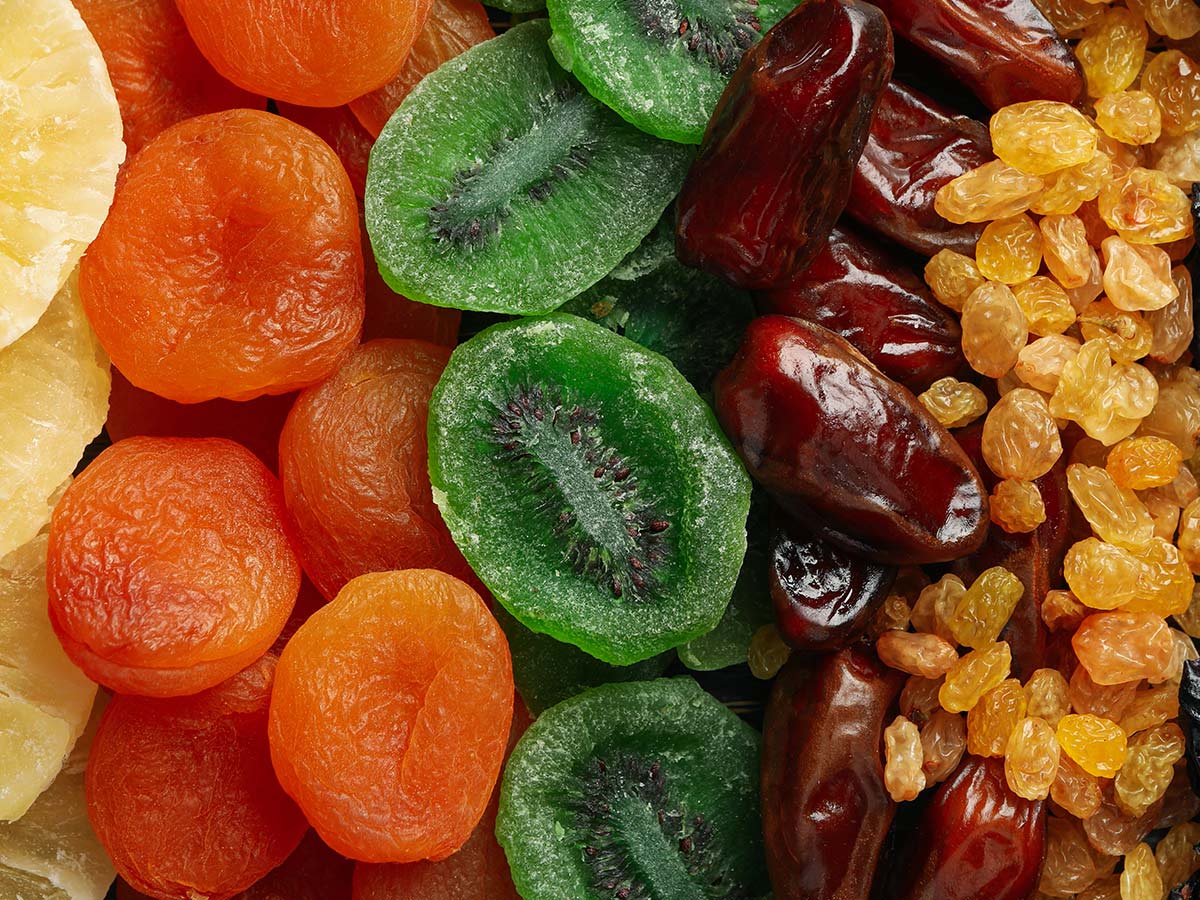
Dried fruit is another food that pretends to be healthy. During the dehydration process, the natural sugars in fruit become concentrated and can easily cause spikes in blood sugar. While they do have a good amount of fiber in them, that doesn't make up for the fact that they are loaded with sugar.
Dried cranberries and blueberries are lower in sugar content, naturally, but sometimes sugar is added during the dehydration process to sweeten the normally tart fruits. Many companies also add sugar to the already super sweet dried fruit. Bottom line? Fresh fruit is always the best option.
Ice Cream

Ice cream is high in fats and sugars. Some brands can have as much as 7 grams of fat and 14 grams of sugar for half a cup. This is definitley not a good combination for anyone looking to eat healthy, let alone someone who is struggling with diabetes.
Many brands make ice cream without additional sugars, which can be a lifesaver for someone with diabetes. Others have sweeteners like stevia or monk fruit that help control the calories and glycemic load of it all. Just be sure to read the label!
White Rice
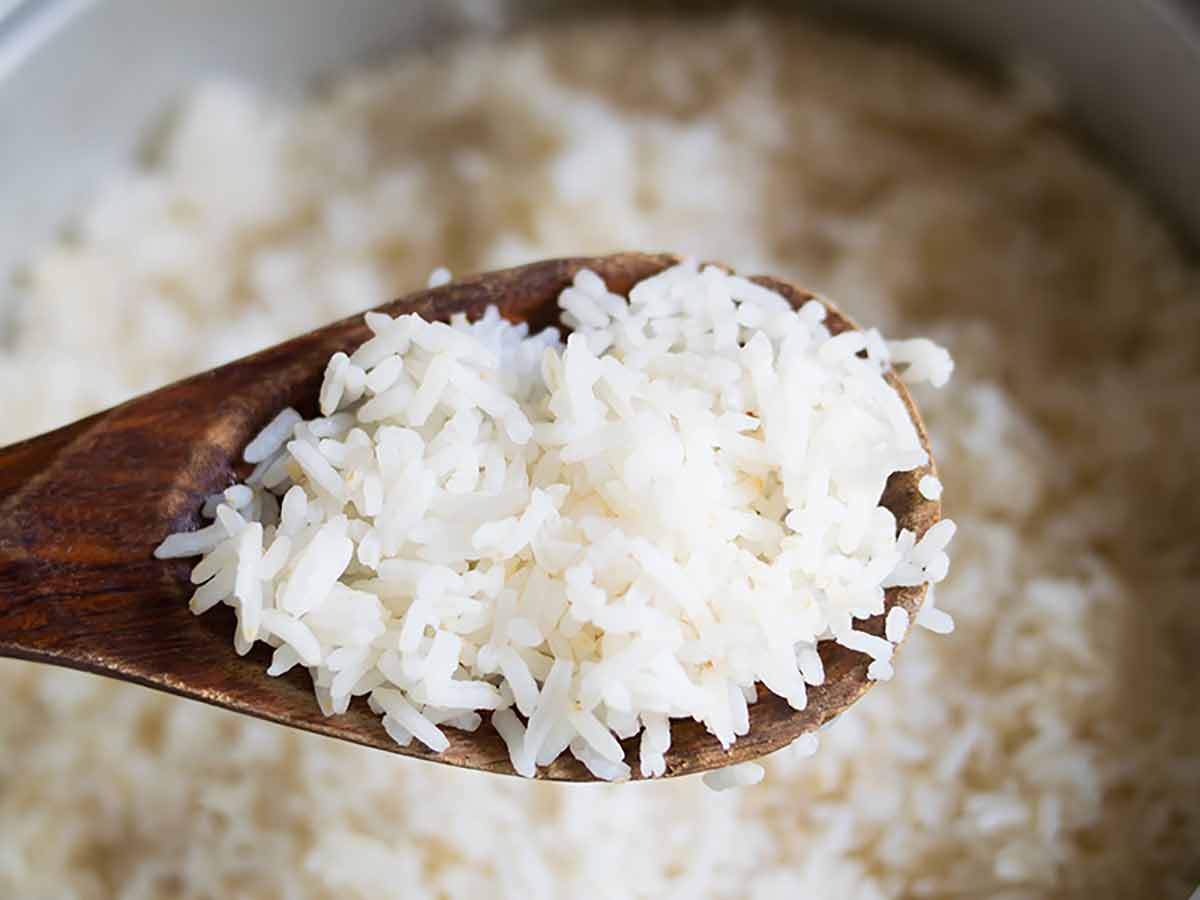
White rice is high in starch and can cause spikes in blood sugar. In general, refined carbohydrates should be avoided since they’re processed like sugar when your body starts to digest them. If brown rice is not the best, white rice is even worse. Overall, each are healthy, but for someone with diabetes, they should be very careful.
Instead, opt for quinoa, barley, or cauliflower rice, but be careful to watch your portions. These have more fiber than its white rice counterpart and isn't associated with spikes in blood sugar. The rice bran oil found in the grains also has been shown to lower LDL levels.
Fried Food
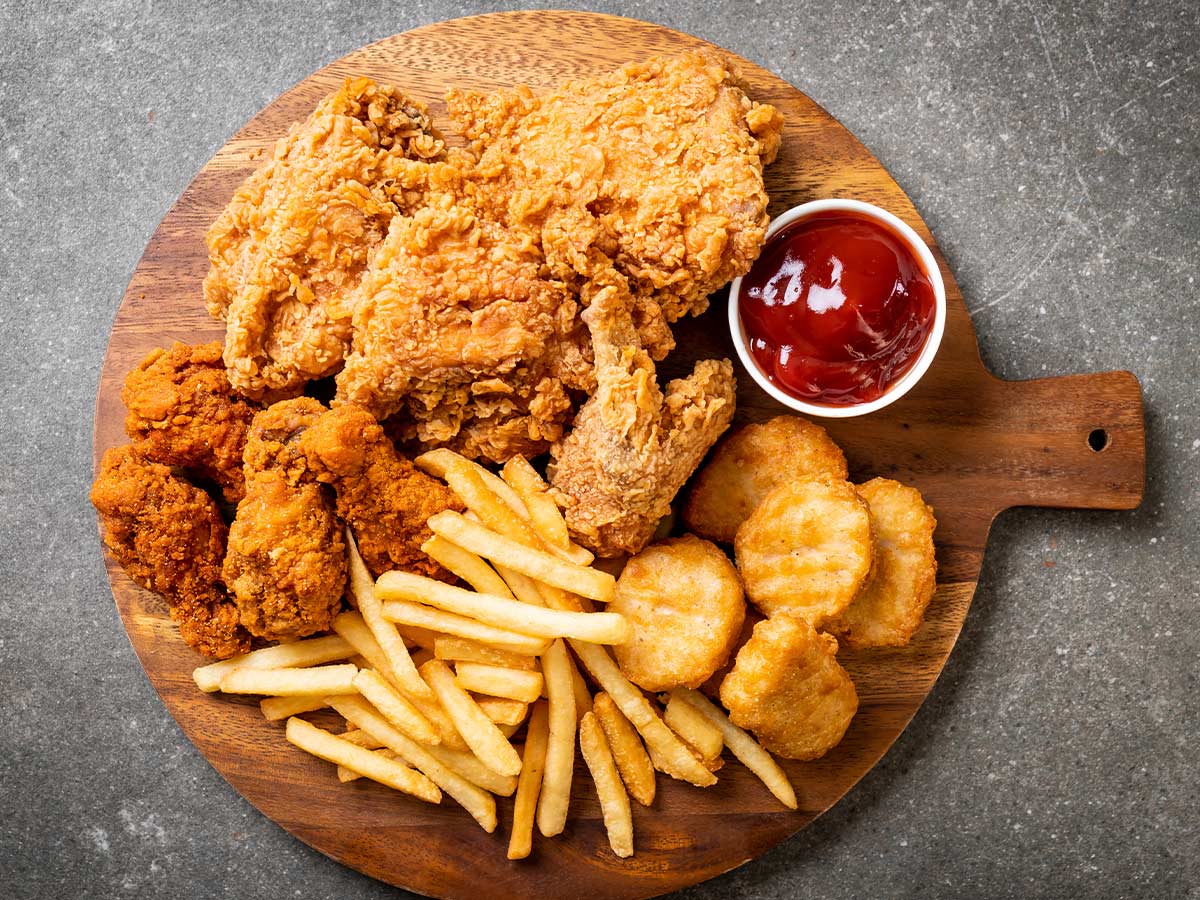
Fried foods are one of the worst things a person with diabetes can eat. These types of food can lead to weight gain and wreak havoc on your blood sugar. They are all very high in fat because they are fried, and it is very often the worse kinds of fats for you as well.
This includes French fries, potato chips, doughnuts, and any other types of fried foods. These are all carb-heavy and cause your blood sugar levels to spike. Even fried proteins like chicken are covered in carb-loaded batter or breading that adds to how unhealthy it is for everyone, especially people with diabetes.
Doughnuts

Unfortunately, doughnuts are really bad for you, especially when you have diabetes, and there really aren’t any kinds of “healthier” swaps you could make for them. Doughnuts have to be deep fried in order to maintain their same level of delicious, and baked doughnuts are just not the same. Deep frying means that there are a ton of unhealthy oils involved, often including the horrible trans fats.
A type of healthy alternative to doughnuts would be to bake your own cake doughnuts with better ingredients like whole wheat flour or almond flour instead of white flour as well as maple syrup or honey instead of white sugar. However, even with these swaps, you have to be careful about not eating too many. Just because something is “healthier” doesn’t mean that it is “healthy.” Be mindful about what you are eating and how much you are eating.
Deep-Fried Chinese Food

Nothing is easier than ordering some Chinese food when you’re tired, but some Asian dishes can be bad for you. Chicken that’s swimming in sauce can be high in calories and fat. If you still want Chinese takeout, choose white rice instead of fried rice and food that isn't fried or covered in sweet sauces.
For example, sweet and sour chicken sounds healthy, but add the breading and that all-important, sugary sweet and sour sauce, it can spike your blood sugar sky-high! Plus, most of these foods are served with white or fried rice which are also bad for diabetics.
Pizza

Pizza is just white dough with full-fat cheese. Most pizzas are loaded with all the ingredients that are bad for diabetics such as calorie-rich, high in sodium, processed foods like cheese and refined flour. Not to mention that sauces are filled with hidden sugars as well as extra salt that you don't need for a tasty dish.
If you have to order pizza, you can choose a thin-crust with veggies and lean meats, but it’s best to avoid it altogether. You could even try making a healthier version at home with whole wheat pita bread and no sugar added pizza sauce.
Sugary Cereals

Some favorite cereals that seem healthy are full of sugar. For example, Raisin Bran Crunch has 20 grams of sugar per serving. That’s more than double the sugar content of Froot Loops, which has 10 grams per serving. Read the nurtition labels and ingredients list before you buy.
The healthiest cereals are ones that have whole grains, like Fiber One and whole-grain Cheerios. Cereal is also not very filling since it is low in fiber, healthy fat, and protein, so eating sugary cereal might cause you to eat way more than you actually need.
Pastries

Most pastries are loaded with sugar, whether they’re homemade, café-prepared, or pre-packaged. In addition, these sweets use the worst types of fats to add moisture and richness. They are also loaded with butter if they are well-made, or very unhealthy hydrogenated oils if they are a cheaper product. Both are to be avoided when you have diabetes.
All in all, these spike your blood sugar and can increase your cholesterol levels. These are especially to be avoided because can you ever really have just one pastry? No! So, it is best to just not eat one at all.
Butter

Butter and margarine are alright to use in moderation. Fats like these can slow down digestion and make it harder for insulin to work. This can lead to a high blood glucose level hours after your meal. You should stear clear of these spreads when you are dealing with diabetes.
However, choosing butter over margarine can decrease the amount of trans-fat you will consume and will have a better over-all outcome with diabetes management. The best overall choice you can make is to use coconut, olive, or avocado oil to cook with instead of butter, and to change up your spreads on your bread, or just eat it plain!
Biscuits and Gravy

Biscuits and gravy is a breakfast staple for some, but it can be very unhealthy. Biscuits are created from refined flour, which can cause a spike in glucose levels. The gravy also is made with refined flour and can add to the increase in glucose levels.
Gravy is often made with sausage, which is mostly saturated fats. They also often contain hidden sugars that you need to watch out for. At home, you can make it with whole wheat flours and opt for healthy ingredients.
Trans-Fat

Anything with trans-fats or anything labeled “partially hydrogenated” can be dangerous for those with diabetes. Trans-fats are notorious for increasing blood cholesterol levels and are actually worse for you than saturated fats. Anything made with vegetable oils is definitely something that should be raising your flags.
In some cases, foods may be labeled 0g trans-fat but have partially hydrogenated ingredients. Because you don't have any control over these things while eating out, it is best to avoid eating out since many foods you buy at restaurants may have trans fats you don't even know about.
Flour Tortillas

Flour tortillas are high in carbs—we’re talking about 18g of carbs in each tortilla. Also, flour tortillas can contain up to 35% of our daily sodium intake. You will definitely want to watch out for flour tortillas when you are buying them in the store or ordering them at a restaurant.
It’s much better to eat corn tortillas, which have a lot more protein. The blue corn chips are much healthier for diabetics than the white corn chips due to a lower amount of starch. Be sure to get the soft corn tortillas because the crunchy ones are usually made with extra oils and sometimes are even fried.
Candy
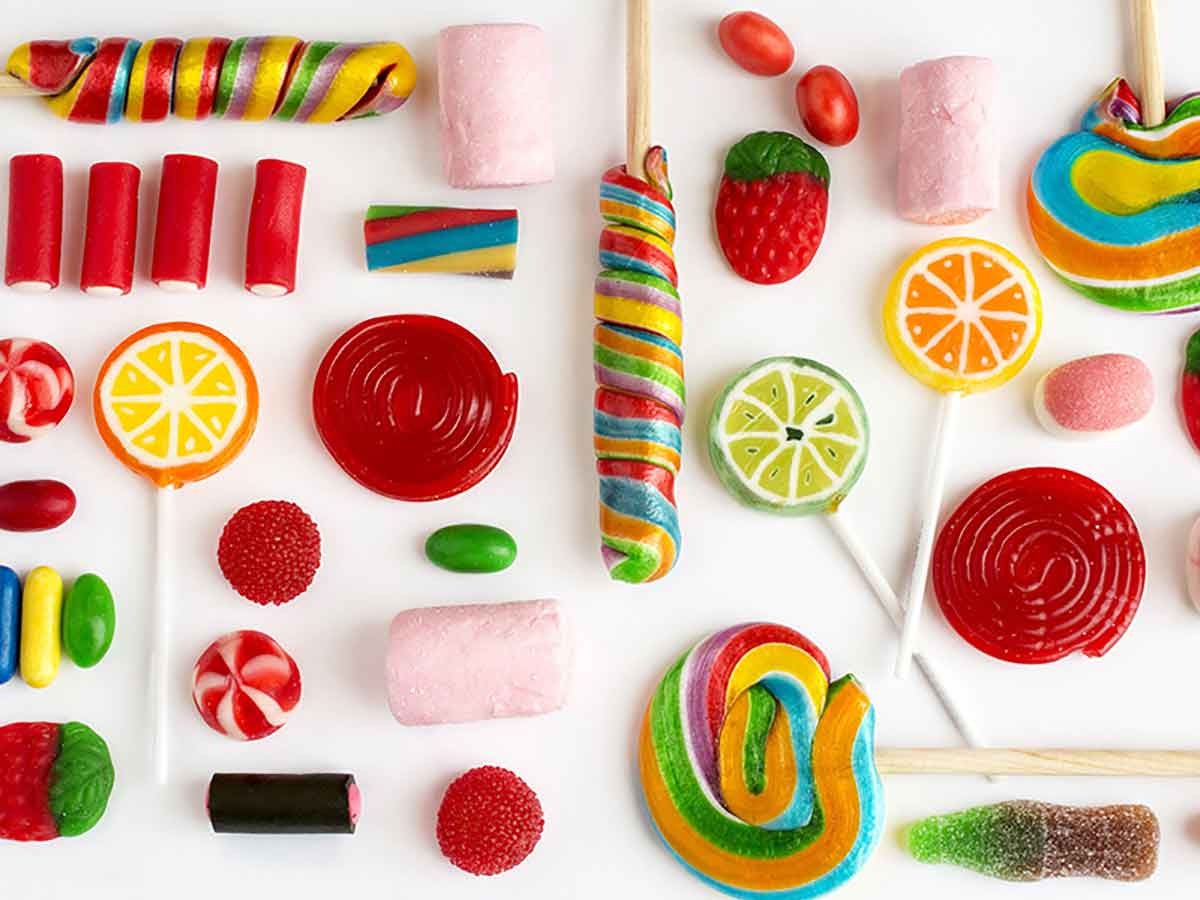
Naturally, candy needs to be avoided as much as possible. Candy is just pure sugar and can cause blood sugar spikes that are dangerous for those with diabetes. Chocolate candies can also be high in fat, which is not good for diabetes either.
According to the American Diabetes Association, diabetics can still have candy every once in a while as long as that patient is eating a healthy, balanced diet and/or combined with regular exercise. A good way to get your candy fix daily, however, could be to have only a square or two of dark chocolate each day since dark chocolate is way lower in sugar than any other kind of chocolate.
Pasta
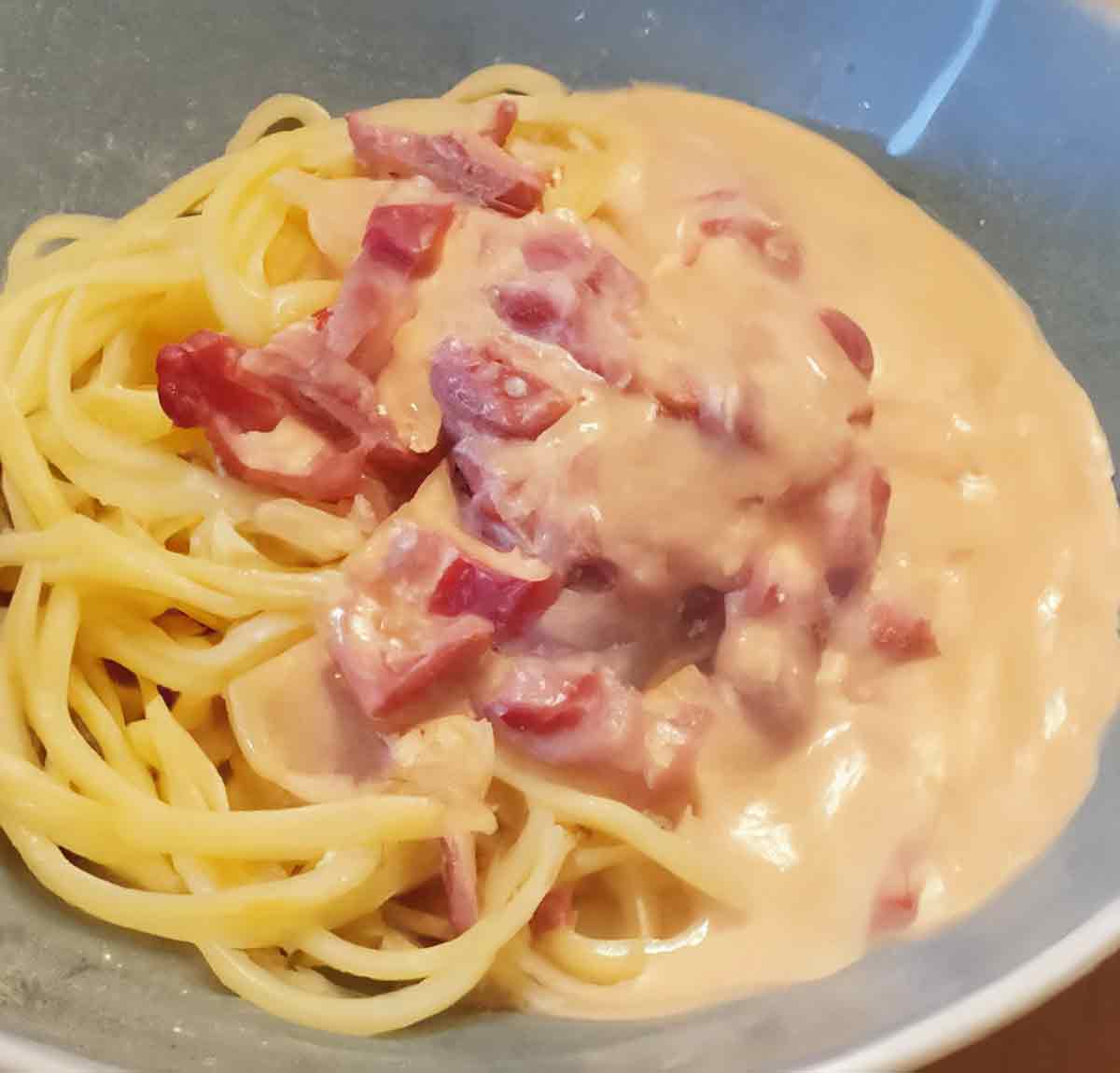
Pasta is a yummy food that can be used in many different ways. Unfortunately, this tasty food is also loaded with carbs, which can elevate your blood sugar levels. Most pastas are made with refined flours that will only spike your blood sugar levels.
Luckily, there are many options for you if you’re ready to cut out pasta but don't want to sacrifice flavor—like noodles made from veggies! There are also chickpea and lentil pastas that have way fewer carbs and a lot more protein that are healthy options.
Bread Crumbs

You already know how bad white bread is for you, but it's easy to ignore it when you think you're not consuming very much. The crunchy coating on your crab cakes can actually be making your blood sugar spike. Avoid this high-carb mistake in favor of something more healthy.
For example, if your recipe just cannot get around adding breadcrumbs to your meal, try panko breadcrumbs which are a healthier choice. You could even try oats, crushed nuts, or corn flakes which could be better to use as well.
Processed Cheese

The amount of processing that American cheese goes through should be enough to put anyone off eating it, but it’s still a popular choice. They are barely "real" cheeses and are packed full of unhealthy salt, fat, and sugar. Just compare it to the real stuff.
To make matters worse, a single slice of American cheese contains 300 mg of sodium, which can drastically increase your blood pressure. "Real" cheese is the minimally processed cheese, not just a claim that it is made with "real" cheese. Go for feta, cheddar, gouda, and other cheese like that if you want cheese, but be sure to watch out for sodium and fat, which all cheeses have.
Mixed Nuts

Mixed nuts are a popular snack that’s super easy to grab when you’re hungry. However, the nuts inside can be high in fats and extremely high in salt. This can raise your blood pressure and make the other symptoms of diabetes worse.
If you’re a person who just loves their nuts, the best kinds for diabetics are walnuts, almonds, pistachios, and peanuts. However, portion control is a must for these tasty treats because of their fat content. Be careful not to eat too many in one sitting by portioning out your snack and leaving the container in the other room so you aren't tempted to eat more than you should.
Peanut Butter

Peanut butter might seem like a good choice, but most are really high in sugar and fats. When you consider that peanut butter is usually paired with jelly or honey full of sugar, it gets even worse for your health.
Instead, try low-fat options like natural peanut butter to keep your blood sugar in check. It has a low glycemic index meaning your blood sugar will not raise to quickly or too high. Natural peanut butter shouldn't have any ingredients besides peanuts, and maybe a little bit of salt. You would be surprised by how much oil, salt, and sugar, as well as a ton of hard to pronounce ingredients, are in a typical peanut butter like JIF.
 Author
Sherrill Dean
Last Updated: June 25, 2025
Author
Sherrill Dean
Last Updated: June 25, 2025